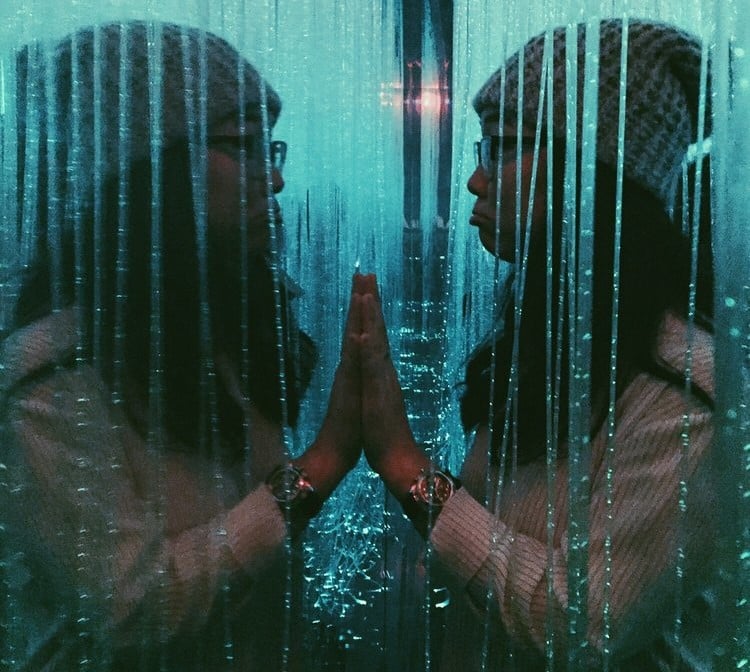
Image: Courtesy of Yelp.
Yesterday, I tried to report on the Museum of Feelings. I failed.
I voyaged down to the Brookfield Place, the charmless upscale mall in the Financial District that was hosting the installation (Tuesday was the last day of its three-week run). In case you didn’t notice the copious subway ads or have images of it clog your Instagram feed, the Museum of Feelings was not really a “museum.” It is a pop-up exercise in installation art-cum-“sponsored content,” conceived by something called Radical Media (“a global transmedia company”) at the behest of Glade®, as a walk-in advertisement for scented candles.
From what I can gather, it consisted of a series of interconnected rooms corresponding to different “moods,” each accompanied by a scent of Glade® candle. The various moods sound more or less like the effects of anti-depressant medication: Optimism, Calm, Invigorated, Exhilarated, and Joyful.
Here’s Smithsonian magazine’s description of the specific exhibits:
The Museum of Feelings doesn’t really have “exhibits” in the conventional sense; rather, visitors move from one themed alcove to another, five in total, each with its own distinctive aroma. The “Optimistic Room,” bathed in vivid pink and purple light, is little more than a lightshow, with patrons using small reflective panels to bounce light around the room. An attendant tells me the odor I smell is “Radiant Berries.” The “Joyful Room” is a dense jungle of green LED lights suspended in vine-like plastic tubes; the “Invigorated Room” encircles visitors in halos of bright light projected on the floor that respond to their movements. The “Exhilarated Room” is a funhouse of crystalline mirrors, like Superman’s Fortress of Solitude, dotted with flower-like patterns and accompanied by the putrid odor of what’s described to me as “Blooming Peony and Cherry.” The “Calm Room” is like stepping into a cloud, saturating us with a fine mist of “Vanilla and Lavender.”
Additionally, there are a series of selfie stations that have special filters corresponding to your mood, which you could then post to social media to advertise your connection to the Museum of Feelings. And, of course, there’s a place where you can buy specially packaged Glade® candles.
The experience scored a weak three-star average on Yelp, but that’s largely because of the wait. It was very, very popular.
I got there a solid half hour before it opened. The line was already more than 10 blocks long. After an hour and a half, I hadn’t advanced a third of the way towards my interactive Glade® experience, so I gave up.
I was defeated by the popularity of the Museum of Feelings. Which, now that I think about it, is a fine metaphor for the attempt to apply the critical mind to this experience.
In the article I cite above, Smithsonian magazine does a heroic job trying to explain why the Museum of Feelings is not worthy of being called a “museum”: “The problem with the Museum of Feelings… is that it lacks any sort of educational or pedagogical logic that defines every other museum in the country,” Jared Keller writes.
This is somewhat true, though I’d point out that the Museum of Feelings’s selfie-bait version of installation art resembles exactly the kind of attractions that museums have turned to in order to bring in the crowds. Here’s Hal Foster, writing of the recent turn towards “experiences” in museum culture: “Perhaps these new and renovated museums have a programme after all, a mega-programme so obvious that it goes unstated: entertainment.”
From the looks of it, the Museum of Feelings pillages elements from most of the popular museum shows of the last few years. There’s a dash of Carsten Höller’s science-museum wizardry (which Roberta Smith once described as “a funhouse of participatory claptrap”), and a touch of the responsive fun of rAndom International’s Rain Room. There’s enough of James Turrell’s gauzy light-show sublimity and Yayoi Kusama’s mirrored psychedelia that either of these artists could probably sue.
Well, nothing wrong with any of these things on their own. Who doesn’t love a light show or a room full of mirrors? They are, in fact, ideal for generating, well, positive feelings.
As it turns out though, if your goal is just to create an indistinct sensation of awe rather than to generate some kind of personal symbolism, you don’t really need something so old-fashioned as an “artist” to do it. The Museum of Feelings both capitalizes on the idea of “museums” as adult theme-parks, and indicates that in their quest for “activating the viewer,” museums may be talking themselves out of a job, because a certain kind of contemporary art experience has already come to function as a harmless feel-good prop, the aesthetic equivalent of a scented candle.
At least that’s what I think from what I can gather from Instagram. Here’s what it looks like: